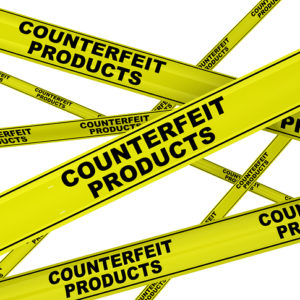Counterfeit products injure consumers, harm U.S. businesses and line the pockets of criminals. This is a central finding of a nine-month study by the Department of Homeland Security (DHS), which documented extensive problems from counterfeiting in a January 24 report, while also announcing a “historic action plan” to stop it.
Counterfeiting is about far more than knock-off luxury handbags that are bought on street corners and often fall apart in a few days. Today, most counterfeit products are sold over the Internet, primarily from foreign counties, especially China. Buyers are typically duped, visiting what they believe are legitimate merchants.
DHS warns Americans need to be weary of counterfeit brakes, seat belts and airbags that a mechanic could put in their car. This also includes the bike helmet that a child may wear and the medicines that could be provided to an elderly parent.
The report also says, “Counterfeit cosmetics often contain ingredients such as arsenic, mercury, aluminum, or lead.” They are often manufactured in unsanitary conditions, resulting in problems in consumers’ eyes and skin.
In addition, the U.S. Government Accountability Office found that among 400 counterfeit iPhone adapters, 99 percent failed fire, safety and shock tests. Twelve percent posed a risk of lethal electrocution.
“If it is being produced it is being counterfeited,” says Mark Morgan, Acting Commissioner, U.S. Customs and Border Protection (CBP). Today, counterfeiting is a half-trillion dollar a year industry. There are even issues of counterfeit products getting into the Department of Defense supply chain.
The administration is putting pressure on e-commerce companies to identify and remove counterfeit products on their platforms. Dr. Peter Navarro, Assistant to the President and Director of Trade and Manufacturing Policy, points out while brick and mortar stores are liable if they sell counterfeit products and fail to list the country of origin, e-commerce companies do not have similar requirements.
It is essential that the United States once and for all be able to pinpoint suspicious postal items coming into the country and to quickly seize them. There are 500 million packages entering the United States annually through the international mail system, which accounts for approximately 85 percent of inbound international package shipments.
Under U.S. law, all inbound postal packages are to have advanced electronic data (AED) by December 31, 2020 and packages from China were to have it by December 31, 2018. AED provides tracking information such as the sender’s name, destination and declared contents. Yet, many postal packages from China still enter the U.S. without AED. Federal law enforcement agencies need to thoroughly enforce current and forthcoming requirements.
The Universal Postal Union, which sets international mail standards has been slow to adopt comprehensive, impactful AED standards. In conjunction with the organization’s upcoming four-year international Congress in August, the United States should push for changes that will greatly accelerate the use and quality of AED.
In fact, AED tracking has been required of private carriers since 2002. Those carriers have put in place sophisticated, comprehensive and high-quality systems. The result is AED has been consistently proven to work in helping to better identify and seize suspicious packages, whether the concern is illicit drugs or counterfeiting. There is no reason to delay its widespread use on all incoming packages.
Furthermore, with the power of data analytics and continuous ongoing strides being made in this area by law enforcement and others, there is reason for optimism that the U.S. can wring counterfeiting out of our economy.
The stakes are high, and time is of the essence. The Administration’s enforcement action plan is an encouraging development. By expanding use of AED technology and vigorously enforcing current laws, the U.S. will be able to break the back of the counterfeiting industry.

